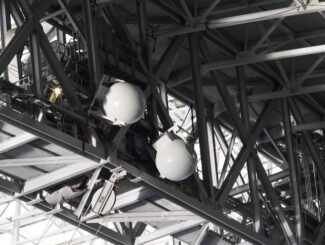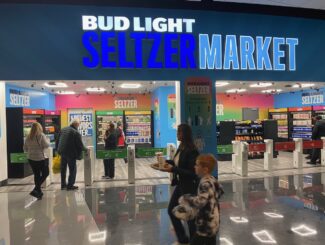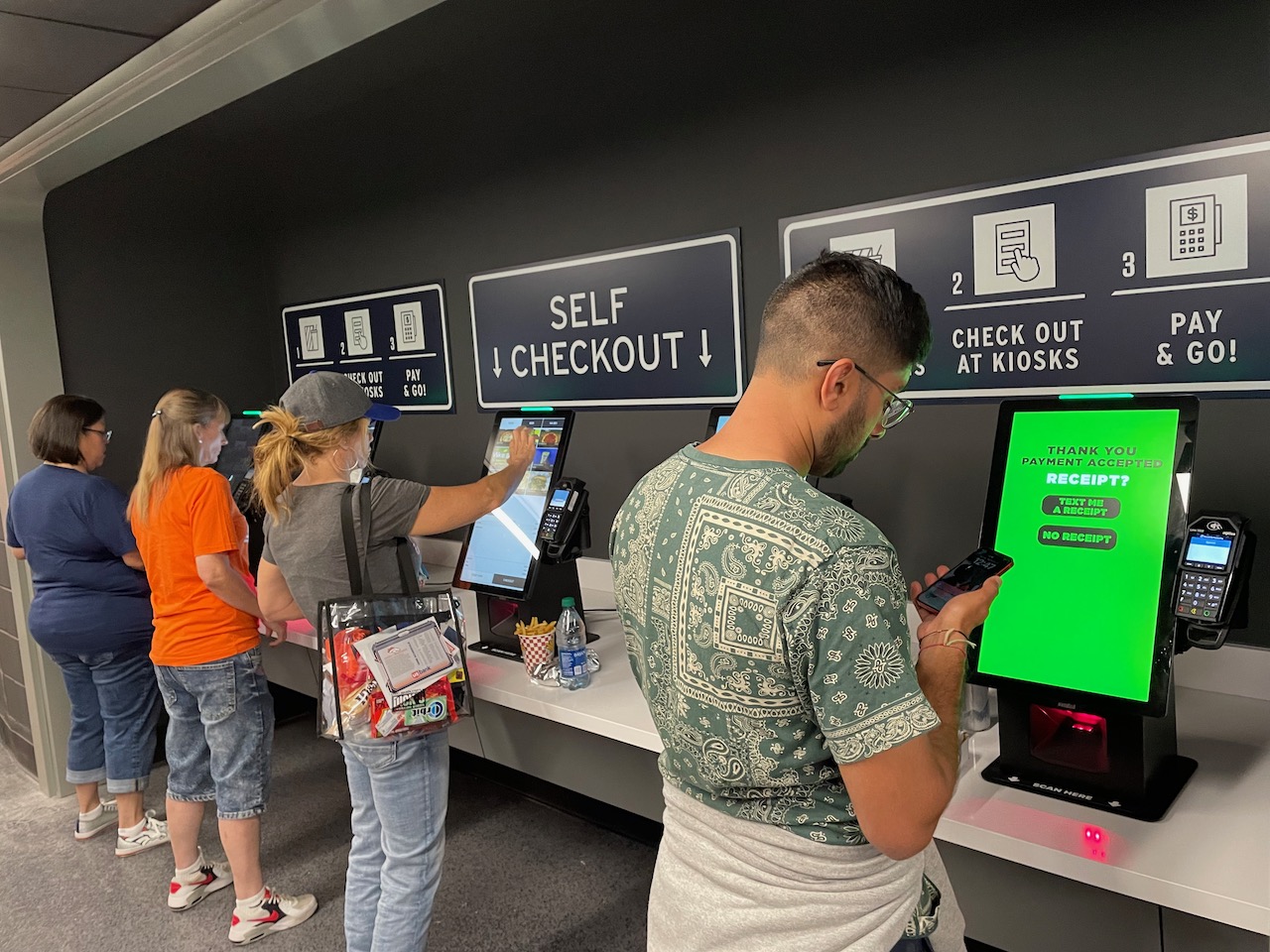
If there is a newer concessions technology that is fairly obvious in the how-to of its use, it’s the big-screen kiosk. Popular at quick-service restaurants in many places, self-order kiosks have been gradually growing in use at stadium concession stands, including Empower Field at Mile High, where the technology has been in use for several years in a few different iterations. At some kiosk stands, customers order and pay at a kiosk, and then pick up their order when it’s ready at a separate window.
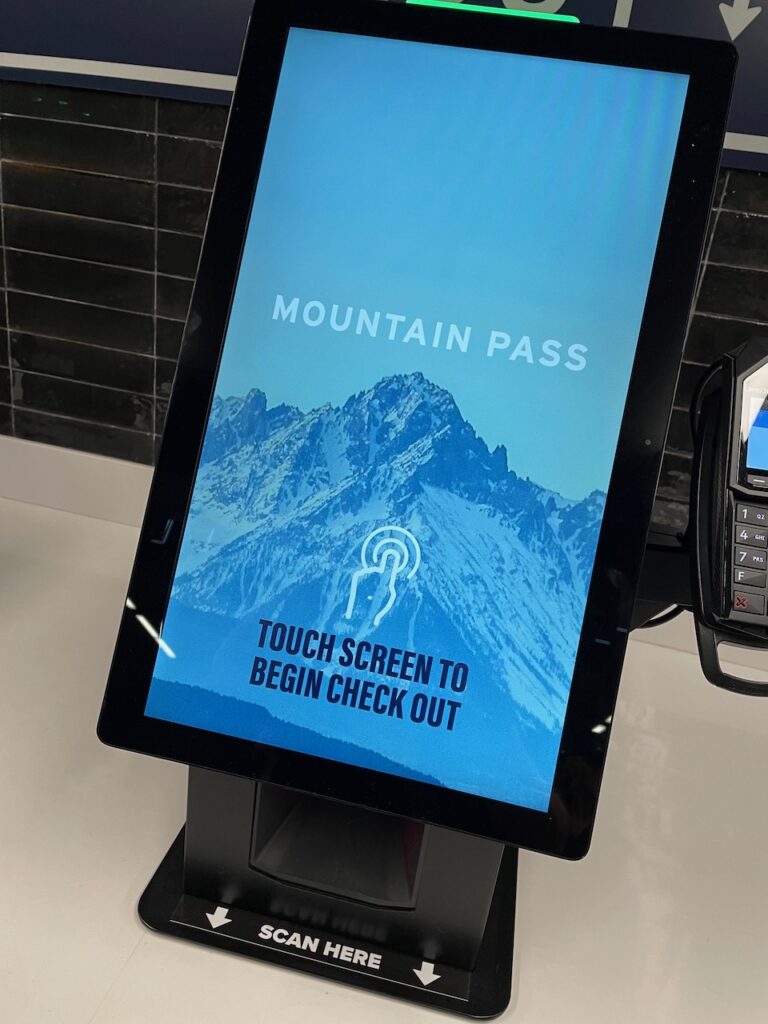
But this year, kiosks are getting a new task: Self-scan checkouts. Flipping the model on its head a bit, Aramark this fall installed 39 checkout kiosks running software from TapIn2, which specializes in mobile and self-service solutions.
With big screens and a very obvious bar-code scanner right below, the kiosks (manufactured by a company called Olea, which builds a large number of white- label kiosk devices) are being used at some new and old grab-and-go stands at the stadium, including one single stand that fills the space previously occupied by three separate stands.
Called the “Mountain Pass,” the three-space store on the first-level concourse features two separate grab-and-go lines with a wide offering of choices: Burgers, build-your-own nachos with a bag of chips and sauce in a cup, pizza, fries, popcorn, hot dogs and pretzels, alongside coolers full of various beverages. In the middle of the two walk-through lines, which are one-way passages walled off from the concourse, is the checkout area, which has 22 of the new TapIn2-powered scanners.
There, fans either use the bar-code scanner for items that have codes on their packaging, or select items by searching for them on the screen, a process already familiar for those who have used self-scan systems at grocery stores. Fans then pay for all their items with the attached card scanner. Staffers are there to check IDs for alcohol purchases, alerted by an LED panel that turns red on the top of the kiosk when an alcoholic beverage is scanned or selected.
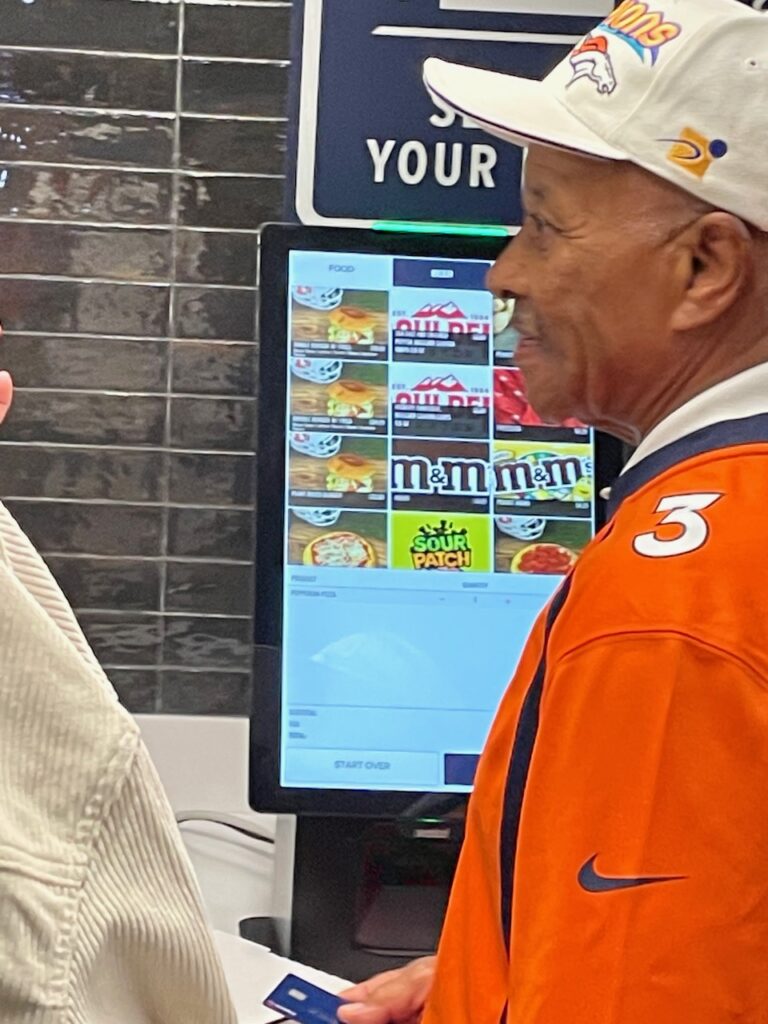
According to Aramark staffers are also supposed check receipts to see if the payment matches up with what’s in the customer’s hands, but during our time witnessing interactions we didn’t see any staffers do so. Instead, the staffers (we counted six during the pregame rush) were mainly helping customers figure out the new systems, and reminding them to open beer cans before leaving.
There is also an option at the Mountain Pass store for customers to sign up for a web-based application that allows them to use their phones to scan items as they select them, but we didn’t see any fans using it during the few minutes we watched.
Self-checkout kiosks already a success
According to Aramark, the Mountain Pass configuration is already looking like a success. So far this year, the combined-stands layout has seen an increase of 19 percent in per-cap spending than the three separate stands it replaced.
We also saw some of the new kiosk checkout scanners in use at some “Favs@MH” stands, which are basically smaller versions of the same theme, with a smaller menu of grab-and-go items and a lower number of scanners (four in one of the stands we saw). According to Aramark, the “Favs@MH” stands with self-checkout technology (some have the kiosks and others have Mashgin systems) have seen a 43 percent increase in transactions during peak times.
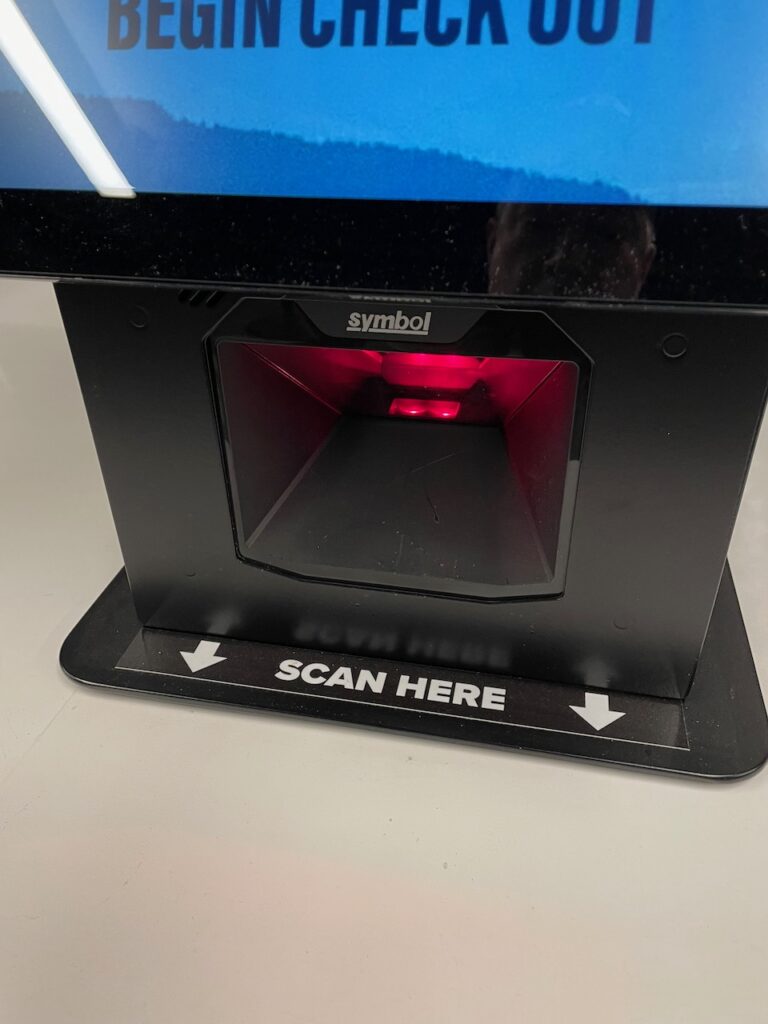
Lloyd Ruch, vice president of client services and a co-founder of the Pasadena, Calif.-based TapIn2, said the self-checkout kiosks are just part of a natural progression for the company, which started out specializing in mobile ordering software (which is used at stadiums including Empower Field at Mile High) and then branched out into self-ordering and now self- checkout devices.
According to Ruch, the design and development of the new self-checkout kiosks took about a couple years to complete, with TapIn2 working with Aramark to get all the kinks worked out. Ruch said the final product, which is also being used by the Cincinnati Bengals and the Seattle Seahawks this season, is not only very familiar to most customers but it is also a cheaper per-unit product than the Mashgin devices.
“The big scanner is nice, it works if you put the products anywhere close,” Ruch said. “It was a big step forward when we got the right form factor and the better scanner.”
While the TapIn2 self-scanners may not be as revolutionary as the Zippin or Mashgin technologies, there is widespread familiarity of how to use kiosks and bar-code scanners. In Denver, the customers we watched needed much less assistance from the staff on how to use the devices. And the scanners could eventually speed up checkout performance by adding a facial authentication component, which could be done through the built-in screen.
Next: Part 4: When design and process are as important as technology
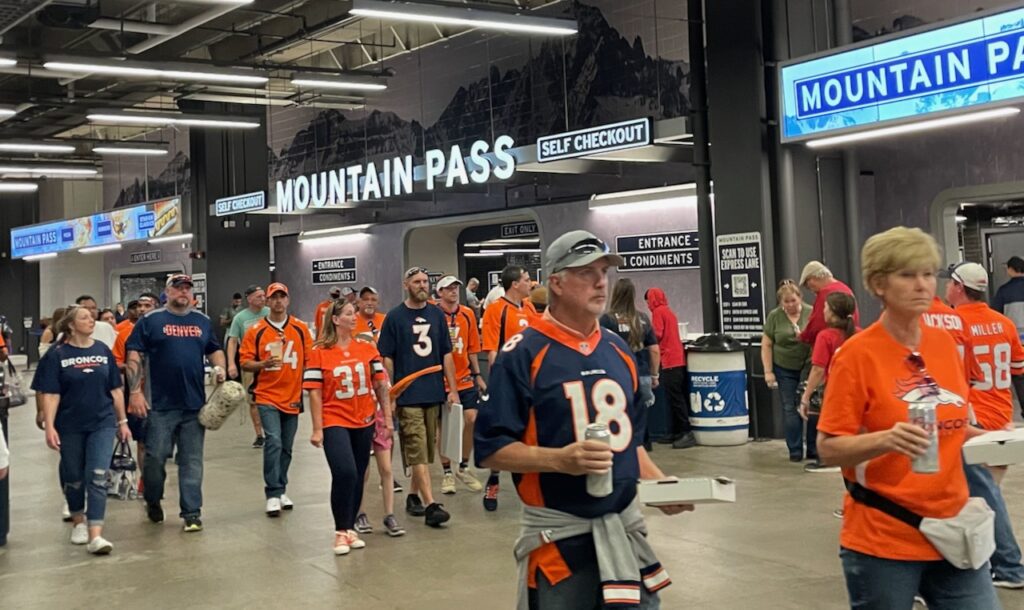
Editor’s note: This post is part 3 of our four-post report on the concessions technology in use at Denver’s Empower Field at Mile High. To go to the start of the report, click here. You can also download a PDF of the full report, with more photos.




